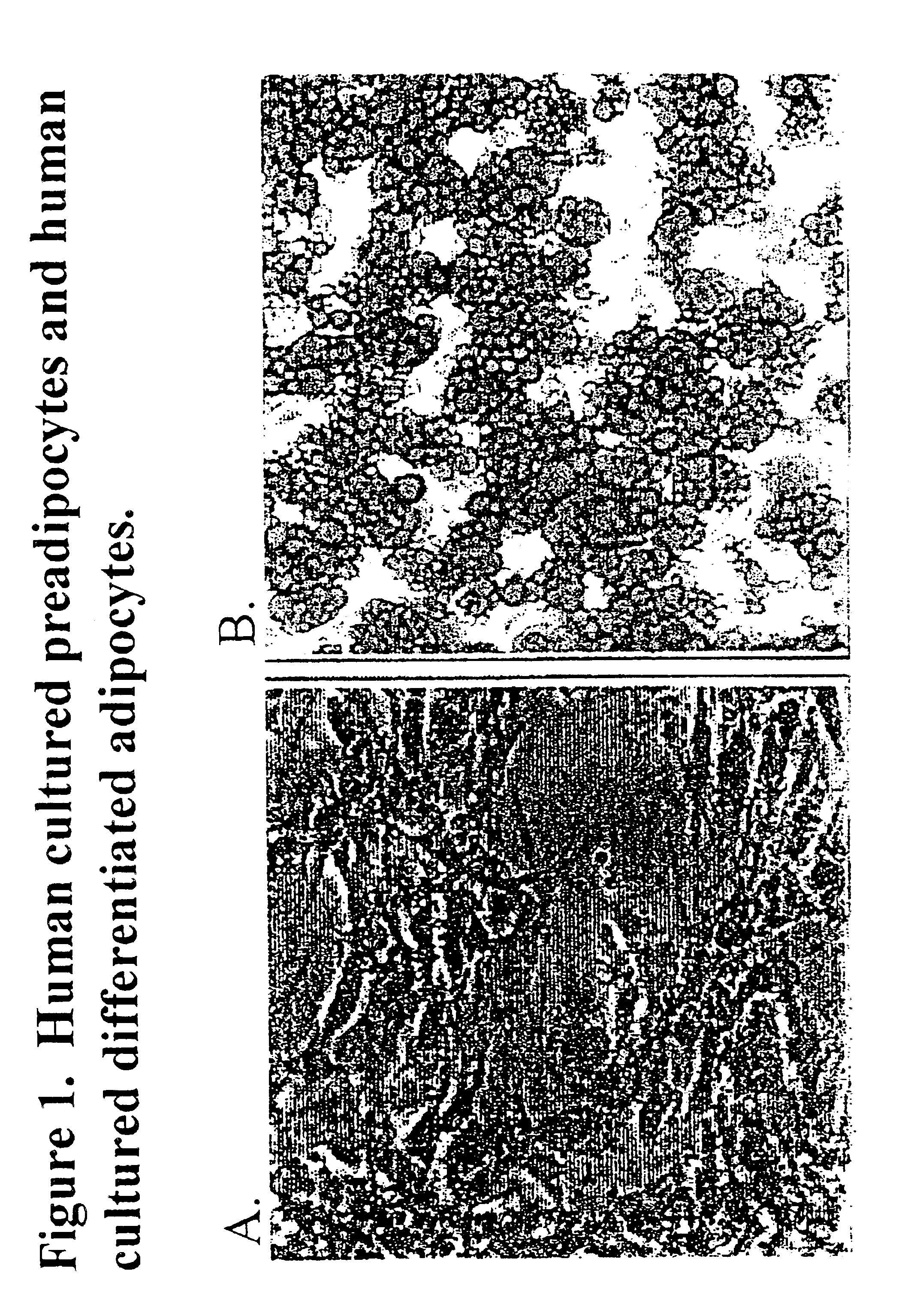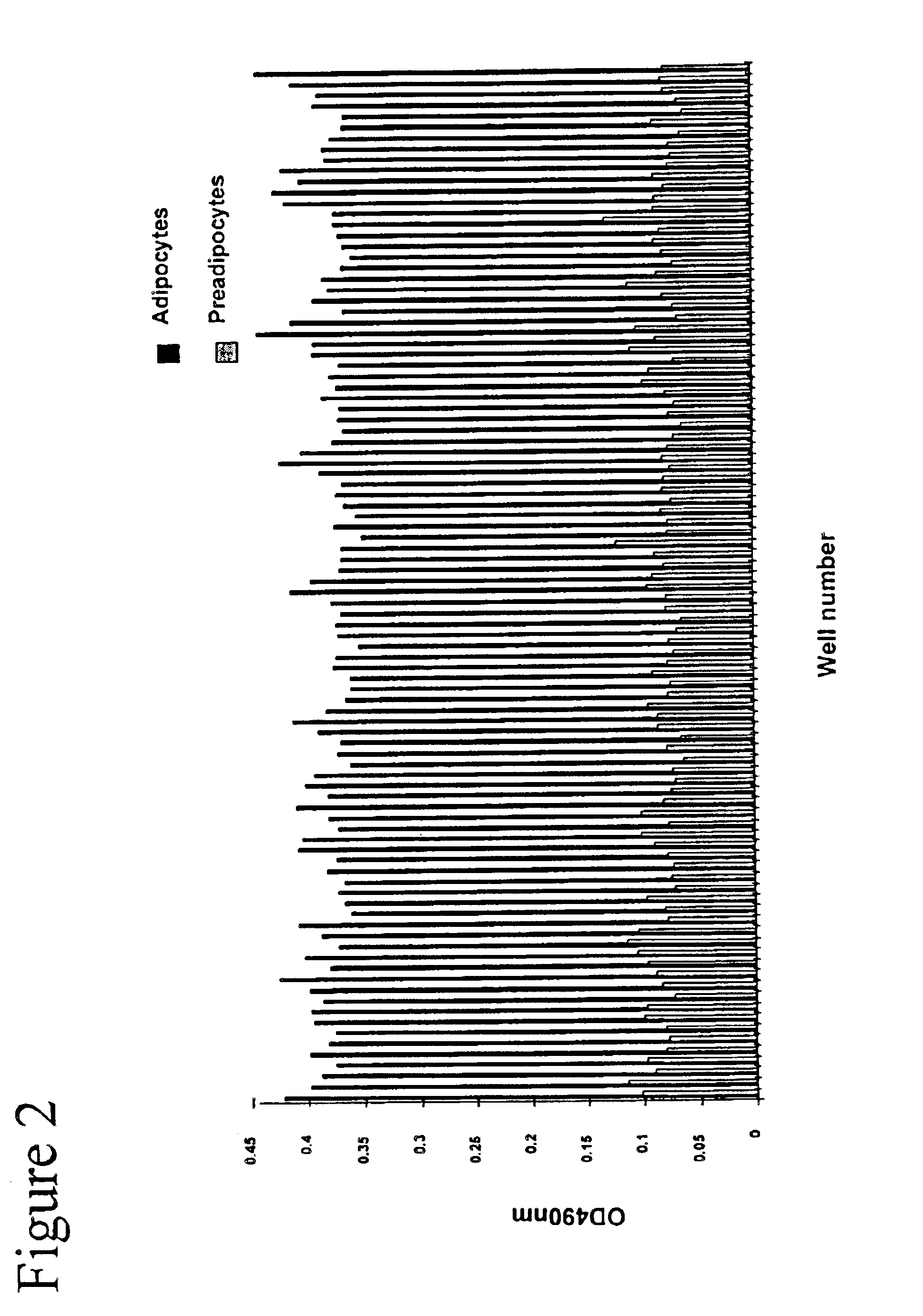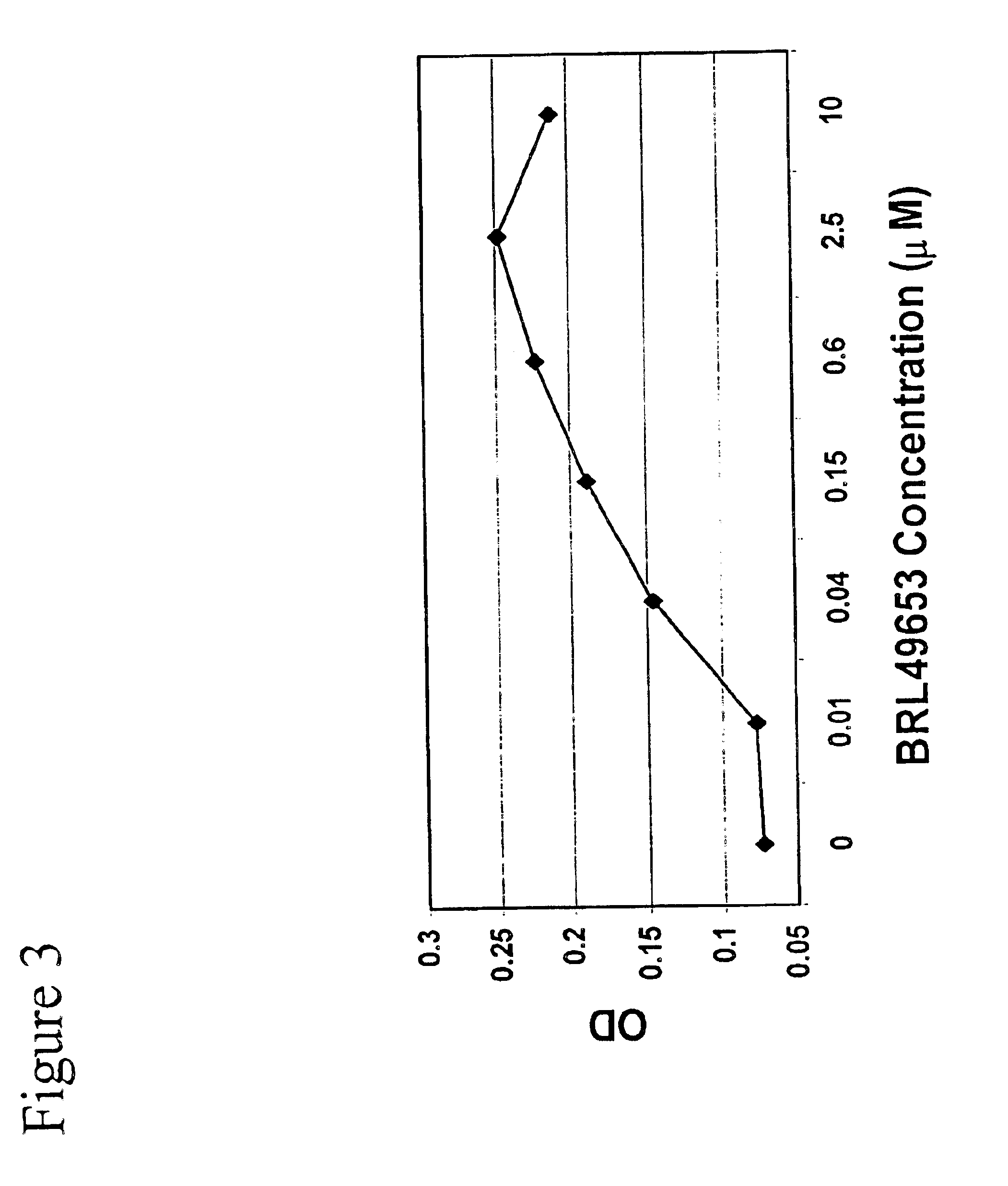Methods and compositions for the differentiation of human preadipocytes into adipocytes
a technology of adipocytes and compositions, applied in the field of adipocyte biology, can solve the problems of affecting the differentiation of human adipocytes into adipocytes, and affecting the differentiation of human adipocytes and adipose metabolism,
- Summary
- Abstract
- Description
- Claims
- Application Information
AI Technical Summary
Benefits of technology
Problems solved by technology
Method used
Image
Examples
example 1
Differentiation of Human Preadipocytes into Adipocytes
[0093]Human preadipocytes were isolated from adipose tissue removed by liposuction surgery according to the procedures previously described by Rodbell and Hauner (Rodbell (1967) and (1974); Hauner, supra). Preadipocytes from the stroma-vascular fraction were resuspended in preadipocyte medium (DME-Ham's F-10, 1:1 (v / v), 10% FBS, and penicillin-streptomycin-fungizone) and plated at 25,000 cells / well in each of the wells of a 96 well plate (150 μl / well). The cells were then placed in a 37° C. 5% CO2 incubator and allowed to settle overnight. The following day, all of the medium was removed and replaced with 150 μl differentiation medium (Dulbecco's Modified Eagle Medium / Ham's F-10 Nutrient Broth (1:1, vol / vol), 15 mM HEPES buffer, pH 7.4, 33 μM biotin, 17 μM pantothenate, 0.2 mM isobutylmethylxanthine, 100 nM insulin, 1 μM dexamethasone, 1 μM BRL 49653 (diluted into medium from a 100× DMSO stock solution), 10% (vol / vol) fetal bovin...
example 2
Identification of Compounds that Enhance Preadipocyte Differentiation to Adipocytes
[0099]To test the ability of a compound to stimulate differentiation of preadipocytes to adipocytes, the procedures of Example 1 were followed with the following modifications. BRL 49653 was omitted from the differentiation medium and replaced with the compound to be tested or with vehicle alone as a negative control. BRL 49653 was used as a positive control. Various concentrations of BRL49653 in DMEM / F-10 medium containing 3% fetal calf serum, 100 nM insulin, 1 μM dexamethasone, and 0.2 mM isobutylmethylxanthine were incubated with the cells for 3 days and then adipocyte media without BRL49653. After 9 days the cells were washed, fixed and stained with Oil Red O as described herein. The Oil Red O was extracted, quantitated spectrophotometrically and the results plotted as BRL49653 concentration versus optical density (OD). FIG. 3 illustrates the dose responsive effect of BRL49653 on the ability to di...
example 3
Identification of Glucocorticoids and Glucocorticoid Analogues
[0100]To test the ability of a compound to act as a glucocorticoid and / or glucocorticoid analogue, the procedures of Example 1 were followed with the following modifications. Human preadipocytes were isolated and cultured in DMEM / F-10 medium containing 3% fetal calf serum, 100 nM insulin, 0.2 mM isobutylmethylxanthine with increasing concentrations of dexamethasone under the conditions described herein for 3 days. The media was then replaced with DMEM / F10 (1:1) containing 3% fetal calf serum, 100 nM insulin and increasing concentrations of dexamethosome. The cells were fed with this medium every three days for 12 days. Cells were then washed, fixed and stained with Oil Red O as described above. FIG. 4 illustrates the ability of dexamethasone to stimulate differentiation in a dose-dependent manner, as measured by lipid accumulation.
PUM
| Property | Measurement | Unit |
|---|---|---|
| pH | aaaaa | aaaaa |
| pH | aaaaa | aaaaa |
| OD | aaaaa | aaaaa |
Abstract
Description
Claims
Application Information
 Login to View More
Login to View More - R&D
- Intellectual Property
- Life Sciences
- Materials
- Tech Scout
- Unparalleled Data Quality
- Higher Quality Content
- 60% Fewer Hallucinations
Browse by: Latest US Patents, China's latest patents, Technical Efficacy Thesaurus, Application Domain, Technology Topic, Popular Technical Reports.
© 2025 PatSnap. All rights reserved.Legal|Privacy policy|Modern Slavery Act Transparency Statement|Sitemap|About US| Contact US: help@patsnap.com



